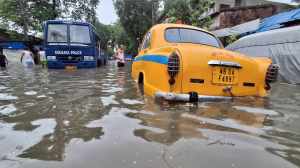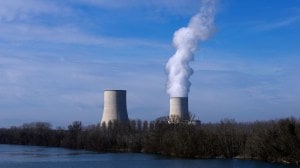Tamed Tigers add to Tamil trauma
OPERATION Jaya Sekuru (Sure Victory) is probably the Sri Lankan army's last major battle in the war against the Liberation Tigers of Tamil ...

OPERATION Jaya Sekuru (Sure Victory) is probably the Sri Lankan army’s last major battle in the war against the Liberation Tigers of Tamil Eelam (LTTE). If the army does manage to do the improbable by taking control of the strategic Vavuniya-Killinochi road from the Tigers, and retaining control over it, it could spell the beginning of the end for the guerrilla group that has held the Sri Lankan government to ransom for the last 15 years.Apart from the military defeat, their inability to prevent the army from taking the road would mean a serious loss of face for the Tigers amongst the Tamils.
It was with the first retreat from Jaffna — the LTTE leadership preferred to describe it as “strategic withdrawal” — that the Tigers sowed the seeds of disillusionment about themselves and their abilities as rulers and administrators. It created deep discontent amongst the Tamils of north-east Sri Lanka, who perhaps more than any other people in this world are fanatically attached to their homes and properties and are today thrown into the streets and roadsides of the Vanni and refugee camps in Vavuniya.
However, even the staunchest critics of the Tigers amongst the Tamils do not want this to happen.
Most Tamils realise that the LTTE is responsible for the deaths of many Tamils in Sri Lanka. In no other liberation struggle in the world have its leaders engaged in fratricidal wars against their own people with such brutality and efficiency. By now it is quite clear that Prabhakaran is a megalomaniac who knows he will thrive only in war and cannot survive politically or otherwise — in a democracy. He will therefore either find excuses not to negotiate with the Sri Lankan government or do so only for a breather.
There is a real possibility that once the military weakens the LTTE to a point of no return, Sinhalese politicians can turn around and say: “Problem? What Tamil problem? We have finished the problem, haven’t we?” There are serious doubts whether Chandrika Kumaratunga, who in the beginning impressed the Tamils by her sincerity, can withstand pressure from chauvinist elements within and outside her party.
These petty details would have mattered little had there been some progress on the political front, but that unfortunately has not happened. There is a stalemate on the devolution proposals with no consensus in sight between the ruling coalition and the opposition UNP on the contentious issues of a) whether the north and east should be one unit as the Tamils insist; b) should Sri Lanka rename itself as a federal state, again as the minority groups desire; and c) to what extent should the regional council which will administer the north-east be granted powers over such issues as land.
Even some constituents of the ruling People’s Alliance coalition are opposed to giving in on these issues. No Tamil seriously believes that Sinhalese politicians will risk their political careers by daring to take bold decisions.
It was soon after the fall of Jaffna in December 1995 that these doubts led to the tragic conclusion that just as the war can never end as long the LTTE remains a force, Tamil aspirations for equality and political autonomy will certainly remain an unfulfilled dream if there were to be no LTTE.
Which is why the Tamil political parties are desperate that a solution must be found and finalised before the Sri Lankan army brings the LTTE to its knees. It is under these circumstances that the Tamils have been demanding that their fate must not be left to the mercy of the two major Sinhalese political groupings while the Sinhalese army marches into the Vanni, that there is now no other way out but for a third party to intervene in the crisis.
Third party assistance is urgently required more to push a political deal for the Tamils through the maze of Sinhalese politics but this must happen before the Tigers are eventually crushed by the Sri Lankan army, because sadly, the LTTE is the only lever that the Tamils have now.
Photos


- 01
- 02
- 03
- 04
- 05





























